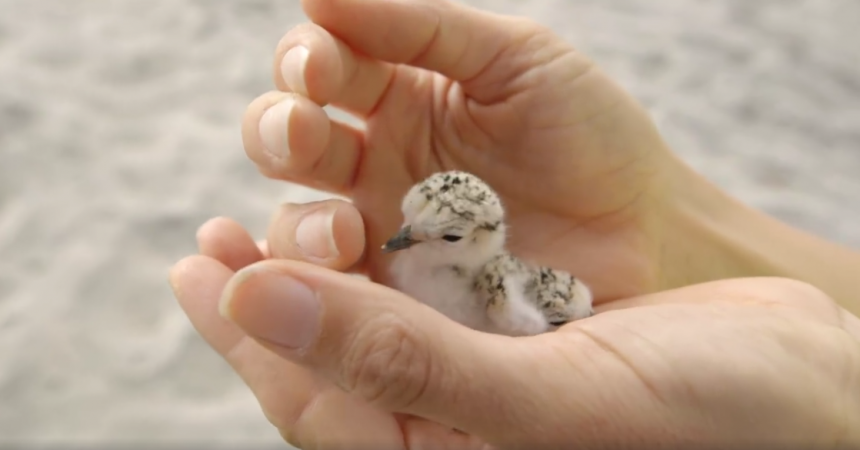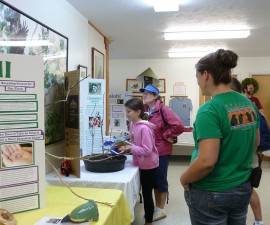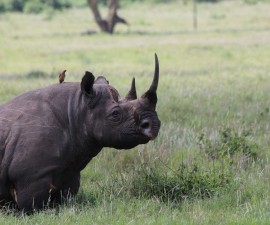The California least terns have departed their nesting sites in San Diego County to feed in the waters off the coasts of Central and South America. The western snowy plover chicks are grown up and the adults have transformed from their stark black-and-white breeding plumage to their almost uniform gray winter getup. Though many of the plovers remain on the beaches in San Diego (others have traveled south), their focus has shifted from defending territories, breeding, and rearing chicks to foraging and storing energy for the next breeding season.
This seasonal shift in activities affords researchers and site managers the opportunity to do some more intensive work improving and expanding their nesting habitat. This includes trash cleanups along the beaches, invasive plant species control, and native dune restoration.
Recently, we were fortunate to have a group of passionate and engaged high school students join us in the field for a day of work. They were from the Conservation Corps at the San Diego Zoo Safari Park, where they meet twice a month to either perform public outreach at the Safari Park or do a day of conservation-based community service.
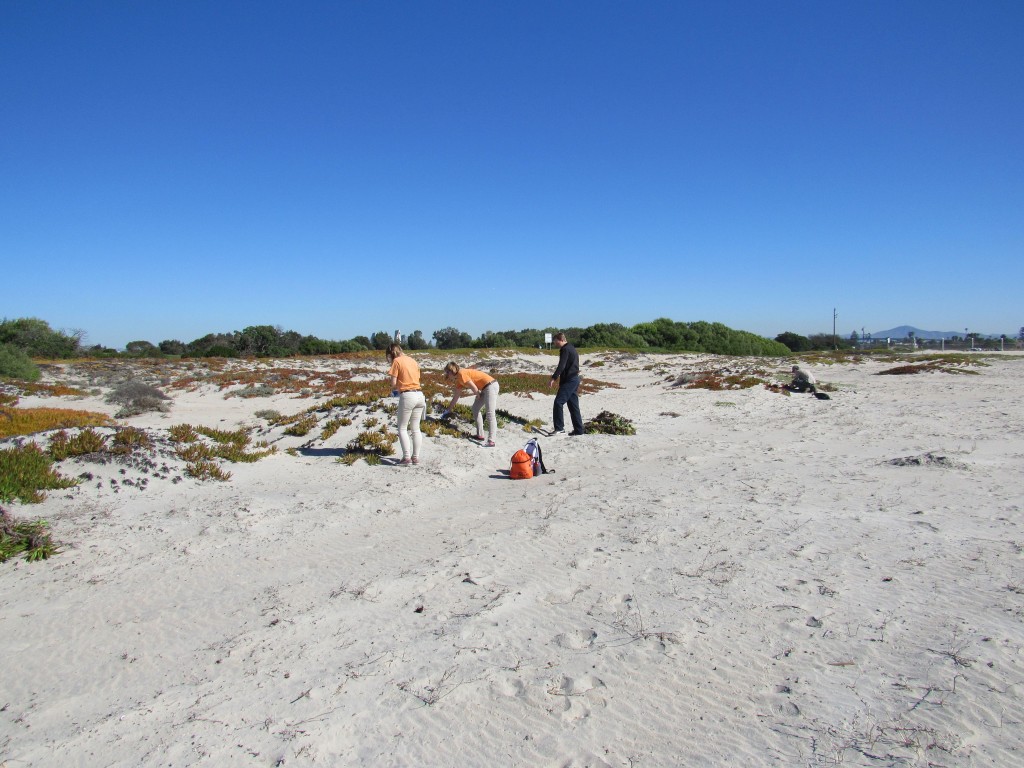
The dunes at the western snowy plover nesting site before invasive plant control measures. The red-hued plant covering the dunes is the invasive ice plant. U.S. Navy photo by M. Post 2015
They arrived early on a Saturday morning full of energy, enthusiasm, and an already impressive knowledge of the challenges facing the nesting seabirds and shorebirds in San Diego. The task of the day was to remove ice plant (Carpobrotus edulis) from one of the western snowy plover nesting habitats on Naval Air Station North Island, part of Naval Base Coronado. Ice plant, a succulent native to South Africa, was originally imported to California for erosion control. It has now spread well beyond the realm of personal gardens and highway slopes to dominate much of the coastline from Northern California into Mexico. It presents a problem for the nesting seabirds and shorebirds because it forms a dense vegetative cover, but the terns and plovers prefer a more open landscape.
The ice plant in question had encroached on the beach from a neighboring golf course, and was covering over half of the dunes in the nesting area. The Conservation Corps worked for most of the day, pulling the ice plant, raking it into piles, and carting the piles out of the dunes. These are not easy tasks, considering that the roots go deep into the dunes and the succulent leaves are weighed down by water storage. However, the teens kept at it all day, battling anthills and spiders, and were able to clear a large part of the dunes. There is now space for the native plants, such as Nuttall’s acmispon (Acmispon prostratus), beach sand verbena (Abronia umbellata), and native dune grasses to take hold. And when spring comes, the western snowy plovers will be able to build their nests in areas that were previously dominated by ice plant.
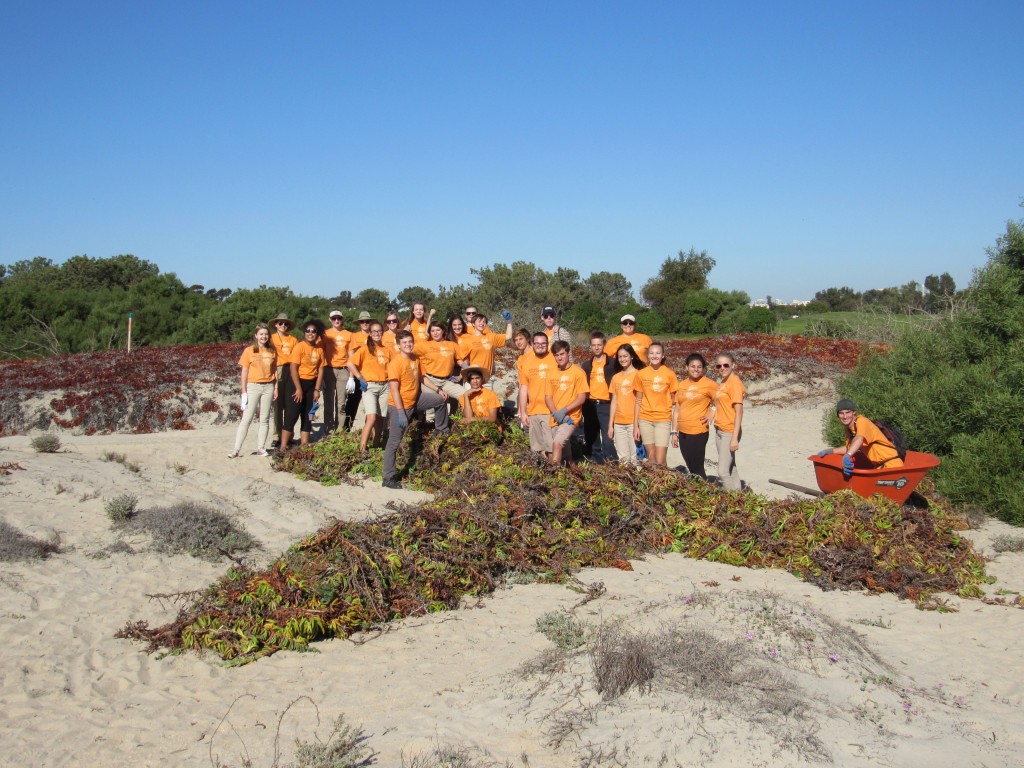
Students stand proud over their pile of ice plant at the end of the day. U.S. Navy photo by M. Post 2015
We are extremely grateful for all the help from the Conservation Corps, along with our partnership with the Navy, that allowed the work to occur—and we look forward to the next opportunity for another day of habitat management!
Maggie Lee Post is Senior Research Associate for the San Diego Zoo Global Institute for Conservation Research.

